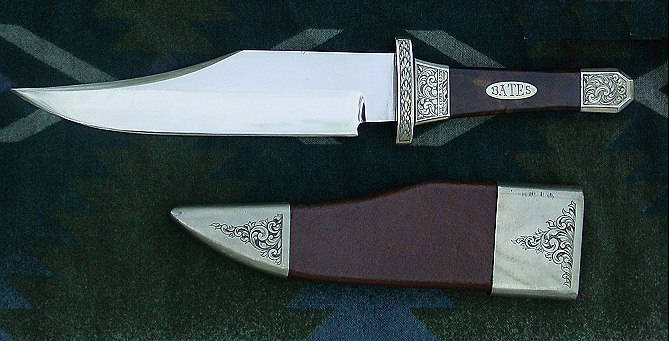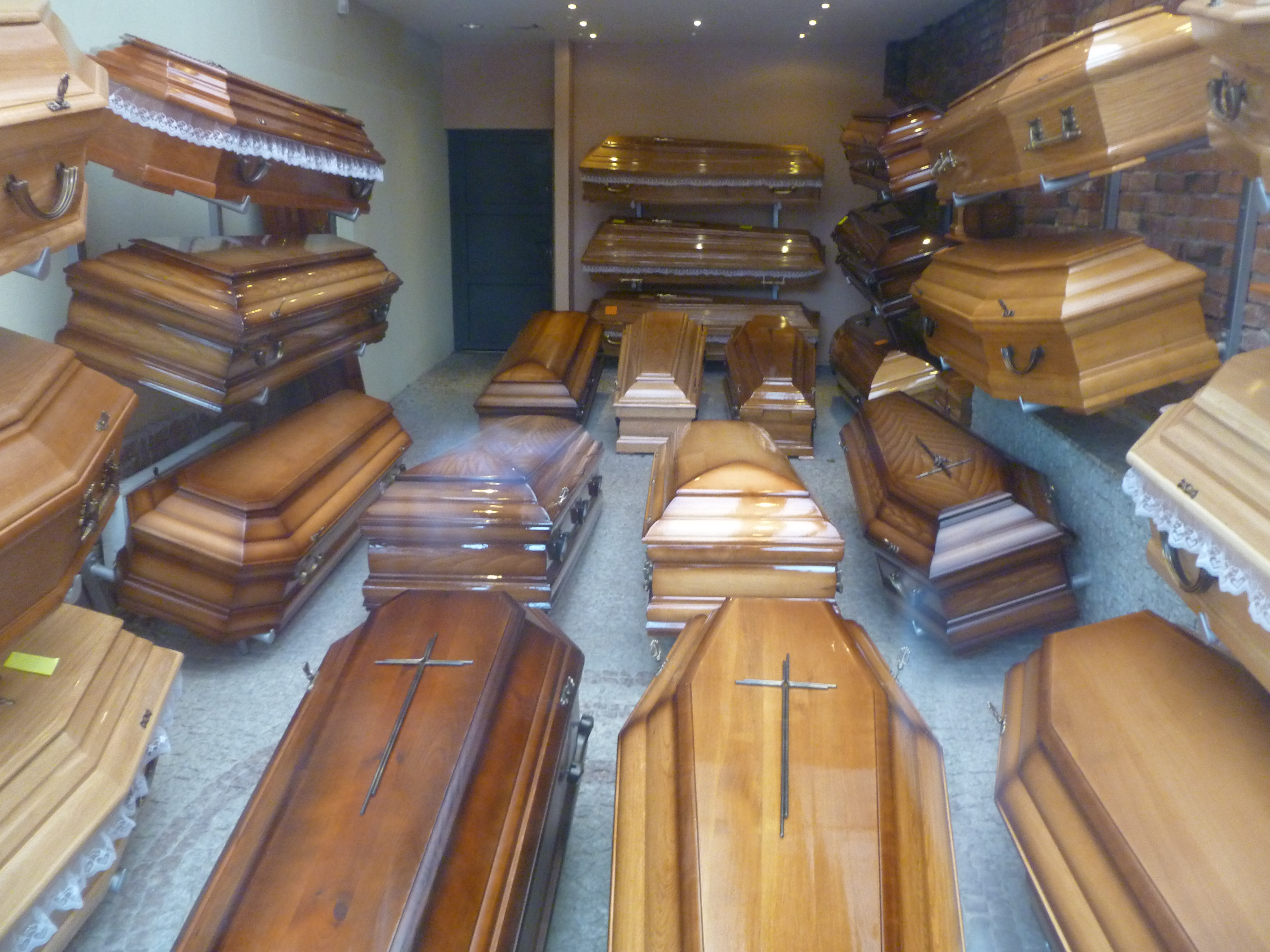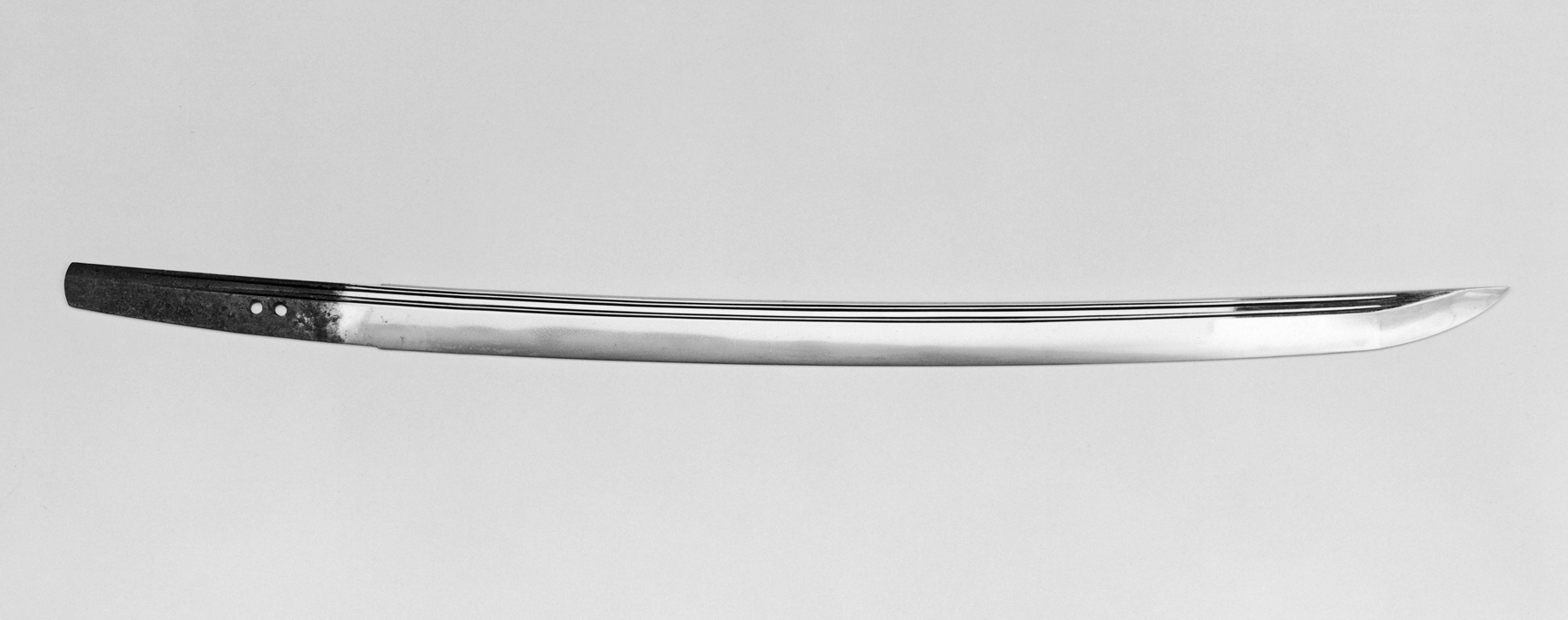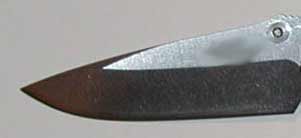|
Clip Point
The clip point is one of the three most common shapes for the blade of a knife (the others being the drop point and the spear point). Clip point blades have the appearance of having the forward third of the blade "clipped" off. The clip itself can be straight or concave. Description Traditionally, the spine or unsharpened edge of the knife begins at the hilt and continues to a point between one third to one fourth of the blade length. The blade spine then tapers in thickness in either a straight line or a recurve to the knife's point, which may be located above, below, or in line with the central axis of the blade. The thinned false edge of the clip may be sharpened to form a true second cutting edge. If the false edge is sharpened it increases the knife's effectiveness in piercing. History The clip point blade design dates back to at least Macedonian times, where examples of knapped flint clip point knives from the Eneolytic period have been unearthed at the estuary of Drim ... [...More Info...] [...Related Items...] OR: [Wikipedia] [Google] [Baidu] |
Coffin Handle Bowie Knife
A coffin or casket is a funerary box used for viewing or keeping a corpse, for burial, entombment or cremation. Coffins are sometimes referred to as caskets, particularly in American English. A distinction is commonly drawn between "coffins" and "caskets", using "coffin" to refer to a tapered hexagonal or octagonal (also considered to be anthropoidal in shape) box and "casket" to refer to a rectangular box, often with a split lid used for viewing the deceased as seen in the picture. Receptacles for cremated and cremulated human ashes (sometimes called cremains) are called urns. Etymology ''Coffin'', First attested in English in 1380, derives from the Old French , from -4; we might wonder whether there's a point at which it's appropriate to talk of the beginnings of French, that is, when it wa ... , from [latinisation of Greek language">Greek κόφινος (''kophinos''), all meaning ''basket''. The earliest attested form of the word is the Mycenaean Greek ''ko-pi-na'', writte ... [...More Info...] [...Related Items...] OR: [Wikipedia] [Google] [Baidu] |
Blade
A blade is the Sharpness (cutting), sharp, cutting portion of a tool, weapon, or machine, specifically designed to puncture, chop, slice, or scrape surfaces or materials. Blades are typically made from materials that are harder than those they are intended to cut. This includes early examples made from flaked stones like flint or obsidian, evolving through the ages into metal forms like copper, bronze, and iron, and culminating in modern versions made from steel or ceramics. Serving as one of humanity's oldest tools, blades continue to have wide-ranging applications, including in combat, cooking, and various other everyday and specialized tasks. Blades function by concentrating force at the cutting edge. Design variations, such as serrated edges found on bread knives and saws, serve to enhance this force concentration, adapting blades for specific functions and materials. Blades thus hold a significant place both historically and in contemporary society, reflecting an evolution i ... [...More Info...] [...Related Items...] OR: [Wikipedia] [Google] [Baidu] |
Knife
A knife (: knives; from Old Norse 'knife, dirk') is a tool or weapon with a cutting edge or blade, usually attached to a handle or hilt. One of the earliest tools used by humanity, knives appeared at least Stone Age, 2.5 million years ago, as evidenced by the Oldowan tools. Originally made of wood, bone, and stone (such as flint and obsidian), over the centuries, in step with improvements in both metallurgy and manufacturing, knife blades have been made from copper, bronze, iron, steel, ceramic, and titanium. Most modern knives have either fixed or folding blades; blade patterns and styles vary by maker and country of origin. Knives can serve various purposes. Hunters use a hunting knife, soldiers use the combat knife, scouts, campers, and hiking, hikers carry a pocketknife; there are kitchen knives for preparing foods (the chef's knife, the paring knife, bread knife, cleaver), table knife (butter knives and steak knives), weapons (daggers or switchblades), knives for throwing o ... [...More Info...] [...Related Items...] OR: [Wikipedia] [Google] [Baidu] |
Drop Point
Drop point is a style of knife blade that slopes on the spine of the blade from the handle of the knife to the tip of the blade. This allows the spine of the blade (where the blade is thicker, and thus stronger) to continue forward to the tip of the blade. This way the point is also aligned with the center axis of the knife, eliminating any pitch momentum when stabbing. The curve on the top of a drop-point blade is always convex Convex or convexity may refer to: Science and technology * Convex lens, in optics Mathematics * Convex set, containing the whole line segment that joins points ** Convex polygon, a polygon which encloses a convex set of points ** Convex polytop ..., which is what distinguishes it from a clip point blade. The drop point is a common design for hunting. See also * Clip point * Spear point * Tanto point ReferencesA.G. Russell Knives Knife Terms [...More Info...] [...Related Items...] OR: [Wikipedia] [Google] [Baidu] |
Copper Age
The Chalcolithic ( ) (also called the Copper Age and Eneolithic) was an archaeological period characterized by the increasing use of smelted copper. It followed the Neolithic and preceded the Bronze Age. It occurred at different periods in different areas, but was absent in some parts of the world, such as Russia, where there was no well-defined Copper Age between the Stone and Bronze Ages. Stone tools were still predominantly used during this period. The Chalcolithic covers both the early cold working (hammering) of near pure copper ores, as exhibited by the likes of North American Great Lakes Old Copper complex, from around 6,500 BC, through the later copper smelting cultures. The archaeological site of Belovode, on Rudnik mountain in Serbia, has the world's oldest securely dated evidence of copper smelting at high temperature, from . The transition from Copper Age to Bronze Age in Europe occurred between the late 5th and the late In the Ancient Near East the Copper Ag ... [...More Info...] [...Related Items...] OR: [Wikipedia] [Google] [Baidu] |
Black Drin
The Black Drin, or Black Drim (; ) is a river in North Macedonia and Albania. It flows out of Lake Ohrid in Struga, North Macedonia. It is long and its drainage basin is . Its average discharge is . After flowing through North Macedonia for , the Black Drin crosses the Border crossings of Albania, border to Albania, west of Debar. It merges with the White Drim, White Drin in Kukës to form the Drin (river), Drin, which flows into the Adriatic Sea. It drains most of the eastern border region of Albania. Etymology The name is ancient - Drinius, Trinius (Pliny), Δρεῖνος (Ptolemy). Its origin is Illyrian from older ''*Drūn'', from Indo-European ''*drū''- into Old Indian ''drāvayate'', run, flow, Avestan ''dru'', run.Георгиев, Вл., Ив. Гълъбов, Й. Заимов, Ст. Илчев (съставители). Български етимологичен речник, том 1 (А - З). София, Българска академия на науките. Ин� ... [...More Info...] [...Related Items...] OR: [Wikipedia] [Google] [Baidu] |
Bowie Knife
A Bowie knife ( ) is a pattern of fixed-blade fighting knives created by Rezin Bowie in the early 19th century for his brother James Bowie, who had become famous for his use of a large knife at a duel known as the Sandbar Fight. Since its first incarnation, the Bowie knife has incorporated several recognizable and characteristic design features. However, in common usage, the term refers to any large sheath knife with a crossguard and a clip point, although there are exceptions and special cases. The knife pattern is still popular with collectors; in addition to various knife manufacturing companies, hundreds of custom knifemakers produce Bowie knives with different types of steel and variations in style. Historical complications Murky definitions, limited supporting documentation, and conflicting claims complicate the early history of the Bowie knife. The Bowie knife is not well defined. By the mid-20th century, most included some blade length and shape combination. In the ... [...More Info...] [...Related Items...] OR: [Wikipedia] [Google] [Baidu] |
Dagger
A dagger is a fighting knife with a very sharp point and usually one or two sharp edges, typically designed or capable of being used as a cutting or stabbing, thrusting weapon.State v. Martin, 633 S.W.2d 80 (Mo. 1982): This is the dictionary or popular-use definition of a dagger, which has been used to describe everything from an ice pick to a folding knife with a pointed blade as a 'dagger'. The Missouri Supreme Court used the popular definition of 'dagger' found in Webster's New Universal Dictionary ("a short weapon with a sharp point used for stabbing") to rule that an ordinary pointed knife with a four- to five-inch blade constitutes a 'dagger' under the Missouri criminal code.California Penal Code 12020(a)(24):"dagger" means a ''knife or other instrument'' with or without a handguard that is ''capable of ready use as a stabbing weapon'' that may inflict great bodily injury or death. The State of California and other jurisdictions have seized upon the popular-use definition of ... [...More Info...] [...Related Items...] OR: [Wikipedia] [Google] [Baidu] |





